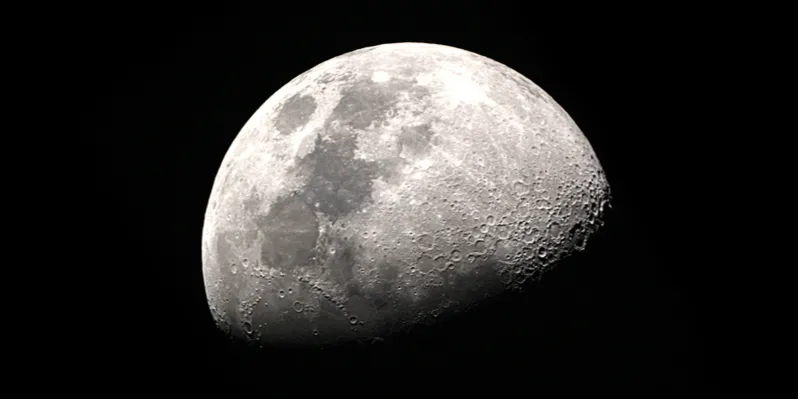Chandrayaan-2 detects presence of water molecules on the moon
ISRO's second lunar mission Chandrayaan-2 has detected the presence of water molecules on the moon, according to the data from the mission.
Chandrayaan-2 — ISRO's second lunar mission — has detected the presence of water molecules on the moon, data obtained from the mission has revealed.
In a paper co-authored by A S Kirankumar, the former Indian Space Research Organisation (ISRO) Chairman, said imaging infrared spectrometer (IIRS) is one of the payloads on-board Chandrayaan-2, which is placed in a 100 km polar orbit to acquire global scientific data.

Representational Image
"The initial data analysis from IIRS, clearly demonstrates the presence of widespread lunar hydration and unambiguous detection of OH and H2O signatures on the Moon between 29 N and 62 N lat., after incorporating physics-based thermal correction to reflectance data," the paper, which was published in Current Science journal, said.
Plagioclase-rich rocks have been found to have higher OH (hydroxyl) or possibly H2O (water) molecules when compared to the mare regions, which were found to have more dominance of OH at higher surface temperature, the paper noted.
The development also assumes significance considering that Chandrayaan-2 did not yield desired results.
Planned to land on the South Pole of the moon, Chandrayaan-2 was launched on July 22. However, lander Vikram hard-landed on September 7, crashing India's dream to become the first nation to successfully land on the lunar surface in its maiden attempt.
The orbiter of the mission is working fine and has been sending data to Chandrayaan-1 — India's first lunar mission — and showed evidence that there was water on the moon, the paper said.
Earlier this year, in March, Union Minister Jitendra Singh had said that the life of the orbiter of Chandrayaan-2 was initially envisaged for a year, but ISRO expects it to last for seven years.
Meanwhile, India is gearing up to launch the Chandrayaan-3 mission. While the mission was scheduled to be launched in late 2020, ISRO has revealed that the mission is delayed further till 2022 due to COVID-19 induced delays.
Edited by Suman Singh








